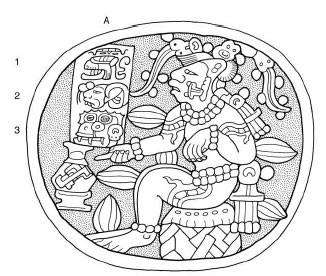Cacao in Ancient Maya Religion: First Fruit from the Maize Tree and other Tales from the Underworld

In the forthcoming book “Chocolate in
the Americas: A Cultural History of Cacao” (University of Florida
Press) Simon Martin sets out a mythological narrative for cacao among
the ancient Maya. He describes how cacao is intimately involved
with the story of the Maize God, whose journey into the Underworld
andultimate resurrection serves as a metaphor for the cycling of the
seasons and the triumph of life over death. Texts and images from
the Classic period (AD250-900) add details missing from the surviving
account of this story in the Popol Wuj, the epic tale recorded by the
K’iche’ Maya in the 16th century.
In the Classic era story the death of the Maize God leads to the ascent
of his soul to heaven, while his corpse is transformed into fruit trees
and all the crops humans will eat (with the exception of maize).
This equates to the episode on the Popol Wuj where the severed head of
Hun Hunahpu is set into a calabash tree and comes to life. For
the Classic Maya the most valuable tree was cacao, and it is as a cacao
tree that he first returns from death and reproduces himself,
inseminating an Underworld maiden and giving rise to his sons and
avengers, the famous Hero Twins--as the Popol Wuj describes. His
sons ultimately defeat the lords of death and fully restore their
father, who is reborn on earth as the young and beautiful
maizestalk.
As Martin points out, the finely painted ceramic vases of the Classic
Maya contain the phrase yuk’ib iximte’el kakaw “Drinking vessel for
Maize Tree-like cacao”. Here the precious chocolate drink of the
ancient Maya is compared to the mythic “Maize Tree”, the first cacao
created in the Underworld from the sacrificed body of the Maize God.
Updated: Nov 03, 2005 - 01:10
Created: Jul 25, 2005 - 23:37
Download this document in PDF format using the icon. You'll need Adobe Acrobat Reader to view the file. |

File Download
|

